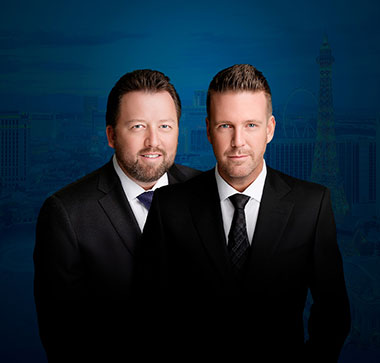The United States in 2019 is a country divided. Political polarization is at peak levels, and many are watching the House impeachment inquiry with the expectation that it will ultimately result in a partisan fight in the U.S. Senate to decide whether to remove Donald Trump from office. But even against this backdrop, Americans are united in their gratitude to the few who carry the massive weight of serving in our military. As we reflect on Veterans Day this week, we should take note of the increased incidence of motor vehicle accidents involving veterans.
In Nevada, Many of Our Neighbors Have Served
While the federal government retains the authority to require compulsory military service – also known as “the Draft” – the unpopularity of the Vietnam War led to the de facto end of the U.S. military as one fueled by conscription. When the Draft ended in 1973, the active duty military was made up of 2.2 million men and women serving in the U.S. Air Force, Army, Marine Corps, and Navy. [1] Although the U.S. remained involved in “hot wars” over the decades that followed, the last four and a half decades have mostly been peaceful. With U.S. involvement in conflict reduced – or at least of a changed, supervisory or peace-keeping role – there has been a generational decline in the U.S. military population. By the time of the U.S. Census in 2000, the active-duty force was down to about 1.2 million men and women. [2] The force has actually grown since then due to the lengthy wars in Afghanistan and Iraq, and at last count nearly 1.3 million people made up the U.S. active-duty forces. Nonetheless, this is only about one-half of one percent (0.5%) of the U.S. population. [3]
Nevada is home to about 220,000 veterans of the U.S. military, which amounts to about 1.1% of the national, domestic population of veterans. [4] (This excludes the approximately 92,500 U.S. veterans who live in other countries.) This is actually a slightly higher percentage of veterans than is predicted by Nevada’s population; Nevadans make up only 0.92% of the entire U.S. population. [5] Oddly enough, the fact that Nevada is somewhat overrepresented in terms of its veteran population is not due to Clark County, which houses two of the state’s four military bases. Clark County – where Las Vegas is located – is home to Creech and Nellis Air Force Bases. But U.S. veterans living in Clark County only make up 68% of the state’s veterans; by comparison, Clark County contains 74% of the overall population of Nevadans. Washoe County, which is where the cities of Reno and Sparks are located, has 15% of the state’s overall population but 16% of the state’s veterans; it is also home to the Reno Air Force Base. Fallon Naval Air Station, located in the small town of Fallon that lies east of Reno and Sparks, is in Churchill County. That county has approximately 2% of the state’s veterans, roughly twice its share of the overall population. [6] [7]
A Hard Homecoming for Many Vets
It is a common misconception that all military veterans suffer from post-traumatic stress disorder, or PTSD. While many veterans do experience PTSD symptoms at some point in their lives, the simplistic notion that every veteran lives with this disorder is baseless and can turn a point of sympathy for our military veterans into a source of stigma. According to data from the Veterans Administration, the federal agency responsible for providing services to America’s former soldiers, about three-tenths of Vietnam-Era veterans experience symptoms of PTSD. For veterans of the more recent conflicts in Afghanistan and Iraq, the rate is about one in five. [8]
Those living with PTSD are at heightened risk of injury from motor vehicle crashes. If one’s PTSD is related to years living in a war-time environment, the sound of a car backfiring or the unexpected maneuvers of a nearby car can induce the fight-or-flight reactions that kept one safe on the battlefield but make one more likely to overreact and become involved in an automobile accident when back home. Many people with PTSD also self-medicate with alcohol, and when drinking and driving mix the likely outcome is a drunk-driving accident that can result in car accident deaths. [9]
Solid data gathered by one of the nation’s leading auto insurers for veterans establishes that military personnel are much more likely to be hurt or killed in a car accident in the months after returning from service than in the months before. These same data show a “dosage effect” of roughly 12%:
- Troops with one deployment had 12% more car accidents than ordinary civilians
- Troops with two deployments were 27% more likely in a motor vehicle crash
- Troops with three deployments faced a 36% increase in the risk of automobile collisions [10]
Experts attribute this strong correlation to the fact that veterans of the wars in Afghanistan and Iraq have survived to return home by adopting driving tactics that are entirely out of place in a civilian context. Driving predictably – stopping at stop signs, remaining in one’s lane, driving in a straight line – in a warzone is the easiest way to fall prey to an ambush. But when driving on ordinary streets, these same habits make on a safer driver. These discrepancies, combined with the potential effects of PTSD and overall heightened vigilance toward aberrant road conditions, make veterans as much as 75% more likely to die in an automobile accident than the general population. [11] These sobering facts should be on our minds as we reflect on the service of our veterans.
[1] https://www.cfr.org/article/demographics-us-military
[3] https://www.cfr.org/article/demographics-us-military
[4] https://www.va.gov/vetdata/docs/Demographics/New_Vetpop_Model/9L_VetPop2016_County.xlsx
[5] https://en.wikipedia.org/wiki/List_of_states_and_territories_of_the_United_States_by_population
[6] https://www.va.gov/vetdata/docs/Demographics/New_Vetpop_Model/9L_VetPop2016_County.xlsx
[7] https://en.wikipedia.org/wiki/List_of_counties_in_Nevada
[8] https://www.va.gov/vetsinworkplace/training/EAP/lesson04/04_003_hs01.htm#box1
[10] Ibid.
[11] Ibid.


